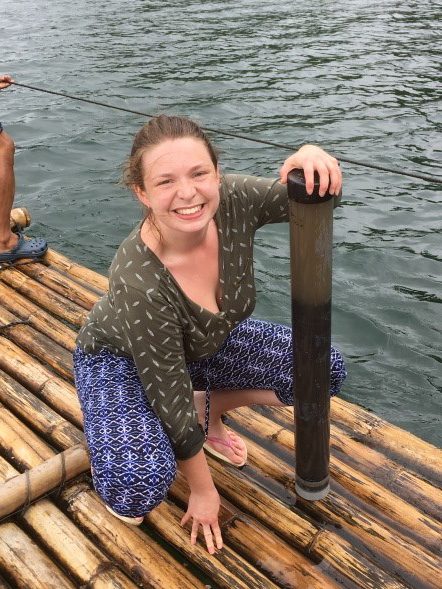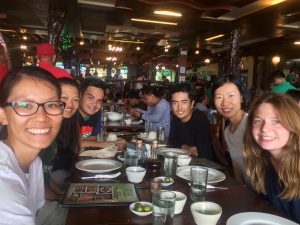
March 7, 2019, by lzzeb
Assessing the impact of aquaculture on lakes in the Philippines
A blog by Charlotte L. Briddon
Hi, my name is Charly and I am a third year PhD student at the University of Nottingham in the School of Geography. Prior to this I completed my undergraduate degree at the University of Southampton followed by a MSc in Geoscience Research at Keele University, For this I choose to study aboard and completed a 6 month placement at the University of Nottingham, Malaysia campus, researching the impact of anthropogenic activities such as mining and oil palm on Tasik Chini, one of only two freshwater lakes in the country. This was the beginning of my interest in investigating how understudied tropical freshwater lakes are responding to a variety of anthropogenic and natural drivers.
My current PhD research is focused on investigating the impact of aquaculture (in this case, the high intensive farming of fish in cages) in freshwater lakes on the island of Luzon, Philippines. There is growing concern that aquaculture is impacting negatively on the ecology of the lakes. One way this is seen is the contamination of the lake water by harmful algal blooms which can be toxic to animals, plants and people and detrimental to the ecology of the lake. Research is needed to assess the severity of this problem and to inform the relevant agencies on how such lakes can be managed in a sustainable way.

Fieldwork team comprised of researchers from the University of Nottingham, National University of Singapore and the University of Santo Tomas, Philippines
My research involved two fieldtrips to my study site, the Seven Lakes of San Pablo, in May 2017 and April 2018. I was part of a team comprised of researchers from the University of Nottingham, National University of Singapore and the University Of Santo Tomas Philippines. These trips were both a success despite equipment malfunction and changing weather conditions which led to a rushed trip to the DIY store! In total six sediment cores were collected from six of the seven lakes.
I am using physical, chemical, and biological information (i.e., proxy data or indicators) preserved in sediment profiles to help me reconstruct how past environmental conditions have changed within these lakes. One of these techniques involves analysing my samples for photosynthetic pigments. Photosynthetic pigments are pigments such as chlorophylls and carotenoids that are found in all photosynthetic organisms. These can give indications into changing levels of productivity as well as the changing abundances of different algal groups such as cyanobacteria and diatoms. Stable isotope analysis is another important part of my research, as I am using δ13C, δ15N to determine changing levels of productivity and sources of organic matter (terrestrial vs. algal) within these lakes. So far, lakes with greater development with respect to aquaculture show a larger degree of change in algal communities, characterised by greater abundance of cyanobacterial pigments than the more ‘pristine’ lakes. The next stage in my research is to use a multi-lake comparison approach to disentangle and quantify the impacts of aquaculture.
No comments yet, fill out a comment to be the first




Leave a Reply